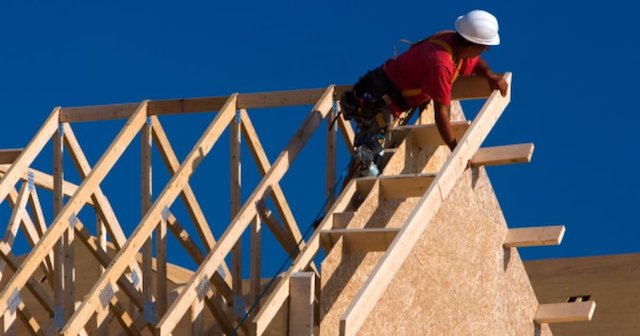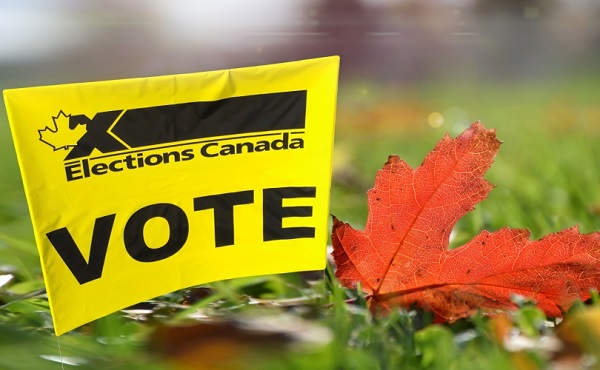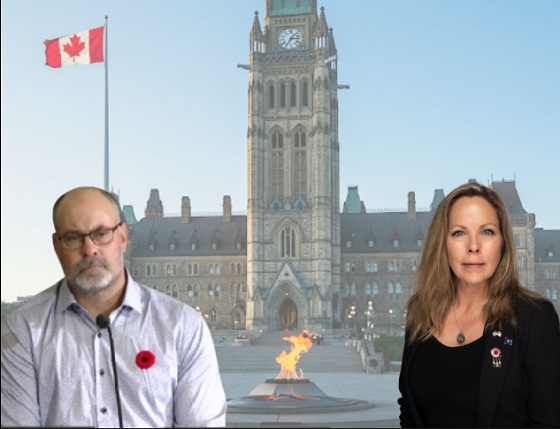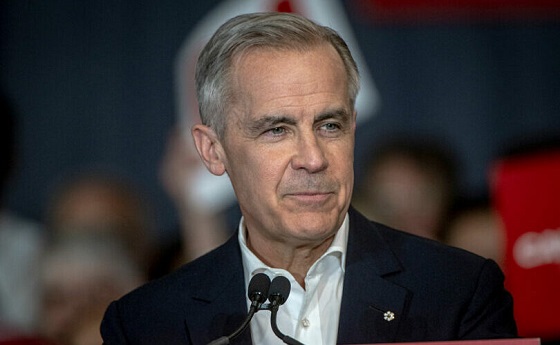Alberta
Province of Alberta reaching out to the rest of Canada for skilled workers

Alberta is calling again
A second Alberta is Calling campaign is launching to attract more skilled workers from across Ontario and Atlantic Canada.
Alberta’s economy continues to grow and diversify, creating rewarding jobs across industries and the province, including in high-demand sectors like skilled trades, health care, food service and hospitality, accounting, engineering and technology. Alberta workers continue to have the highest earnings across all provinces. As more jobs are created, businesses need more skilled workers.
In summer 2022, Alberta’s government launched the Alberta is Calling campaign to help address labour shortages across industries throughout the province. The first campaign targeted Canadians living in Toronto and Vancouver, while this second campaign turns its attention to Canadians living in the Maritimes and parts of Ontario, including London, Hamilton, Windsor and Sudbury.
The campaign highlights Alberta’s economic advantages, including the booming technology and innovation sector as well as offering the highest weekly earnings and lowest taxes in Canada. In addition, the campaign again promotes lifestyle attractions including Calgary, North America’s most liveable city, and access to world-famous mountains and parks for year-round hiking, skiing, biking, and more than 300 days of sunshine per year.
“As Alberta continues to create jobs, attract investment and diversify its economy, we are once again putting out a call for skilled workers to join our great province and appreciate the quality of life that Alberta has to offer. It is the Renewed Alberta Advantage, and I encourage more people to experience it for themselves.”
“Since last summer, nearly 70,000 individuals have moved here, the largest inflow of people we have seen in two decades. Between opportunity and quality of life, Alberta has a fantastic value proposition and the Alberta is Calling campaign has helped to share this message. We look forward to welcoming even more Canadians to Alberta soon.”
“Alberta’s vibrant and diverse restaurant sector is one of the province’s largest employers. However, coming out of the pandemic there are almost 18,000 vacancies in the restaurant sector for vital roles like managers, chefs and prep cooks. That is why Restaurants Canada is pleased to support the relaunched Alberta is Calling campaign.”
“What a great time for people to pursue careers in the trades in Alberta. Women Building Futures supports women seeking new career opportunities to get quality pre-apprenticeship training for exciting careers in the inclusive workplaces WBF Employers of Choice create.”
To learn more about the opportunities and advantages of living in Alberta, visit albertaiscalling.ca.
Quick facts
- The new phase of Alberta is Calling is launching in:
- Atlantic Canada
- St. John’s, N.L.; Charlottetown, P.E.I.; Moncton and Saint John, N.B.; and Halifax, N.S.
- Ontario
- Hamilton, London, Windsor, Sudbury, Sault Ste. Marie, North Bay, Chatham, Timmins and Cornwall
- Atlantic Canada
- In 2022, Alberta saw the highest employment growth in the country.
- Alberta workers continue to have the highest weekly earnings of any provinces, at $1,268 (Statistics Canada, December 2022).
- Alberta families earned a median after-tax income of $104,000 in 2020, which is more than $7,000 higher than Ontario.
- Alberta families generally pay lower personal taxes (for 2022, considering annual family incomes of $75,000, $150,000 and $300,000).
- Alberta saw the highest net interprovincial migration in Canada, at 19,285 people, in the third quarter of 2022.
- According to Alberta’s Short-Term Employment Forecast, high and moderately high-demand occupations include:
- restaurant and food service managers
- software engineers and designers
- web designers and developers
- transport truck drivers
- registered nurses and registered psychiatric nurses
- accounting technicians and bookkeepers
- shippers and receivers
Alberta
Low oil prices could have big consequences for Alberta’s finances

From the Fraser Institute
By Tegan Hill
Amid the tariff war, the price of West Texas Intermediate oil—a common benchmark—recently dropped below US$60 per barrel. Given every $1 drop in oil prices is an estimated $750 million hit to provincial revenues, if oil prices remain low for long, there could be big implications for Alberta’s budget.
The Smith government already projects a $5.2 billion budget deficit in 2025/26 with continued deficits over the following two years. This year’s deficit is based on oil prices averaging US$68.00 per barrel. While the budget does include a $4 billion “contingency” for unforeseen events, given the economic and fiscal impact of Trump’s tariffs, it could quickly be eaten up.
Budget deficits come with costs for Albertans, who will already pay a projected $600 each in provincial government debt interest in 2025/26. That’s money that could have gone towards health care and education, or even tax relief.
Unfortunately, this is all part of the resource revenue rollercoaster that’s are all too familiar to Albertans.
Resource revenue (including oil and gas royalties) is inherently volatile. In the last 10 years alone, it has been as high as $25.2 billion in 2022/23 and as low as $2.8 billion in 2015/16. The provincial government typically enjoys budget surpluses—and increases government spending—when oil prices and resource revenue is relatively high, but is thrown into deficits when resource revenues inevitably fall.
Fortunately, the Smith government can mitigate this volatility.
The key is limiting the level of resource revenue included in the budget to a set stable amount. Any resource revenue above that stable amount is automatically saved in a rainy-day fund to be withdrawn to maintain that stable amount in the budget during years of relatively low resource revenue. The logic is simple: save during the good times so you can weather the storm during bad times.
Indeed, if the Smith government had created a rainy-day account in 2023, for example, it could have already built up a sizeable fund to help stabilize the budget when resource revenue declines. While the Smith government has deposited some money in the Heritage Fund in recent years, it has not created a dedicated rainy-day account or introduced a similar mechanism to help stabilize provincial finances.
Limiting the amount of resource revenue in the budget, particularly during times of relatively high resource revenue, also tempers demand for higher spending, which is only fiscally sustainable with permanently high resource revenues. In other words, if the government creates a rainy-day account, spending would become more closely align with stable ongoing levels of revenue.
And it’s not too late. To end the boom-bust cycle and finally help stabilize provincial finances, the Smith government should create a rainy-day account.
Alberta
Governments in Alberta should spur homebuilding amid population explosion

From the Fraser Institute
By Tegan Hill and Austin Thompson
In 2024, construction started on 47,827 housing units—the most since 48,336 units in 2007 when population growth was less than half of what it was in 2024.
Alberta has long been viewed as an oasis in Canada’s overheated housing market—a refuge for Canadians priced out of high-cost centres such as Vancouver and Toronto. But the oasis is starting to dry up. House prices and rents in the province have spiked by about one-third since the start of the pandemic. According to a recent Maru poll, more than 70 per cent of Calgarians and Edmontonians doubt they will ever be able to afford a home in their city. Which raises the question: how much longer can this go on?
Alberta’s housing affordability problem reflects a simple reality—not enough homes have been built to accommodate the province’s growing population. The result? More Albertans competing for the same homes and rental units, pushing prices higher.
Population growth has always been volatile in Alberta, but the recent surge, fuelled by record levels of immigration, is unprecedented. Alberta has set new population growth records every year since 2022, culminating in the largest-ever increase of 186,704 new residents in 2024—nearly 70 per cent more than the largest pre-pandemic increase in 2013.
Homebuilding has increased, but not enough to keep pace with the rise in population. In 2024, construction started on 47,827 housing units—the most since 48,336 units in 2007 when population growth was less than half of what it was in 2024.
Moreover, from 1972 to 2019, Alberta added 2.1 new residents (on average) for every housing unit started compared to 3.9 new residents for every housing unit started in 2024. Put differently, today nearly twice as many new residents are potentially competing for each new home compared to historical norms.
While Alberta attracts more Canadians from other provinces than any other province, federal immigration and residency policies drive Alberta’s population growth. So while the provincial government has little control over its population growth, provincial and municipal governments can affect the pace of homebuilding.
For example, recent provincial amendments to the city charters in Calgary and Edmonton have helped standardize building codes, which should minimize cost and complexity for builders who operate across different jurisdictions. Municipal zoning reforms in Calgary, Edmonton and Red Deer have made it easier to build higher-density housing, and Lethbridge and Medicine Hat may soon follow suit. These changes should make it easier and faster to build homes, helping Alberta maintain some of the least restrictive building rules and quickest approval timelines in Canada.
There is, however, room for improvement. Policymakers at both the provincial and municipal level should streamline rules for building, reduce regulatory uncertainty and development costs, and shorten timelines for permit approvals. Calgary, for instance, imposes fees on developers to fund a wide array of public infrastructure—including roads, sewers, libraries, even buses—while Edmonton currently only imposes fees to fund the construction of new firehalls.
It’s difficult to say how long Alberta’s housing affordability woes will endure, but the situation is unlikely to improve unless homebuilding increases, spurred by government policies that facilitate more development.
-

 2025 Federal Election20 hours ago
2025 Federal Election20 hours agoNine Dead After SUV Plows Into Vancouver Festival Crowd, Raising Election-Eve Concerns Over Public Safety
-

 2025 Federal Election17 hours ago
2025 Federal Election17 hours agoMark Carney: Our Number-One Alberta Separatist
-

 Opinion1 day ago
Opinion1 day agoCanadians Must Turn Out in Historic Numbers—Following Taiwan’s Example to Defeat PRC Election Interference
-

 C2C Journal2 days ago
C2C Journal2 days ago“Freedom of Expression Should Win Every Time”: In Conversation with Freedom Convoy Trial Lawyer Lawrence Greenspon
-

 International2 days ago
International2 days agoHistory in the making? Trump, Zelensky hold meeting about Ukraine war in Vatican ahead of Francis’ funeral
-

 International21 hours ago
International21 hours agoJeffrey Epstein accuser Virginia Giuffre reportedly dies by suicide
-

 2025 Federal Election21 hours ago
2025 Federal Election21 hours agoColumnist warns Carney Liberals will consider a home equity tax on primary residences
-

 2025 Federal Election2 days ago
2025 Federal Election2 days agoCarney’s budget is worse than Trudeau’s



